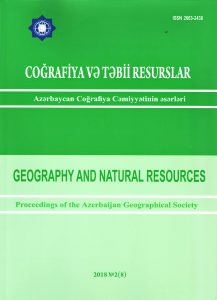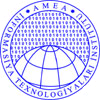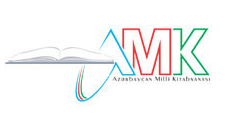THE DISCOVERY OF GEOMETRY IN MARAGHA OBSERVATORY(the begining of article: “Nasiraddin Tusi and his geometric work “Tahriru Uglidis””)
Nasiraddin Tusi refuted V postulate and the theory of parallel lines offered in “Beginning”. He wrote that, parallel lines intersected on the sphere, though they didn’t intersect on the plane. This problem was important for invention of the general cosmology and well-known scientists as Cauchy, Gauss, Bolyami and Lobachevski worked on it after some centuries. Lobachevski could manage this problem with the help of the Azerbaijani scientist Mirza Kazimbey. Mirza Kazimbey translated Tusi’s works on mathematics from Persian into Russian in accordance with the request of the Russian scientist. So, Lobachevski could write his well-known work on non-Euclidean geometry. The Professor Zahid Khalilov wrote that, the work (“Tahriru Uglidis” – author), which was kept as a manuscript during more than 300 years, was published in Arabic in 1594 in Rome. The English mathematician John Vallis and Italian mathematician Sakker also read this work. Proof of V postulate of Euclid by Nasiraddin Tusi played an important role in invention of non-Euclidean geometry. The Professor V. F. Kagan described Nasiraddin Tusi’s achievements in this field in his work “Bases of geometry”: “The Italian scientist Sakker, German scientist Lambert and French scientist Leganr accepted Nasiraddin’s idea proving that, sum of interior angles of a triangle equals two straight angles as a postulate and developed the theory of parallels”.3 The Professor B. A. Rozenfeld wrote: “Nasiraddin Tusi refused to prove the postulate of parallelism by means of two axioms and postulates and used only one simple postulate and it was an important step for Lobachevski’s proof”. Nasiraddin Tusi’s scientific achievements in the field of the theory of parallel lines were interesting for scientists of the middle ages and modern time. His work became popular in Europe after a very short time. 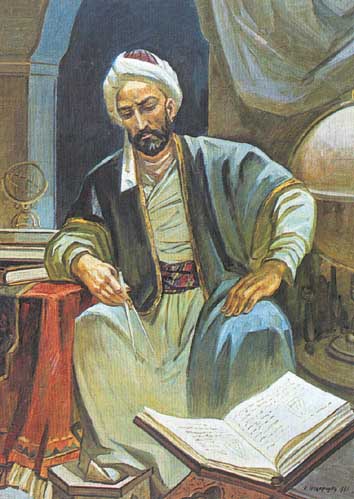 Muhammad Nasiraddin Tusi (1201-1274) Professors Rozenfeld and Yushkevich published N. Tusi’s article about the theory of parallel lines and his work “Treatise removing all doubts about parallel lines” in Russian in 1960. That work was found by the Iranian scientist Tagi Erani and published in Tehran in 1936. According to scientists of Uzbekistan Academy of Sciences, one of the oldest copies of the manuscript kept in the library of the Institute of Oriental Studies of Uzbekistan Academy of Sciences was prepared by one of students of N. Tusi – Nizamaddin Al-Naysaburi. Those scientists wrote about mentioned work: “The treatise of Nasiraddin Tusi is very interesting, it explains the theory of parallel lines explained in “Tehran copy”, criticizes theories of parallel lines of Al-Khaysam and Khayyam (they have been learned by historians of mathematics), describes works of the mathematician of IX century Al-Jouhari, whose work by name “Improved book of bases” haven’t been found yet”. Al-Jouhari, Al-Khaysam, Khayyam and Nasiraddin Tusi had a great role in invention of new geometry by Lobachevski in the first half of XIX century. Well-known scientists of the middle ages Abul Fazl Tabriz from Azerbaijan, Khazin Shani from Egypt, Ibn Al-Khaysam and Omar Khayyam had carried out a lot of works on the theory of parallel lines. Eastern scientists were interested in well-known V postulate of Euclid. 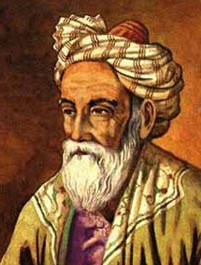 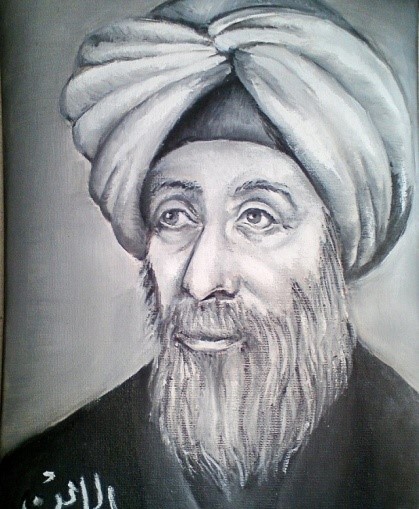 Omar Khayyam (1048-1123) Ibn Al-Khaysam (965-1040)
Though Nasiraddin Tusi lived 770 years ago, scientists of XX century investigate his immortal works with great interest. The scientist’s commentaries about “About the sphere and cylinder” and “Measurement of the circle” of Archimedes have special places in the history of mathematics. The Kazakh scientist Audanbek Kubesov investigated those two works of N. Tusi perfectly and wrote dissertation about it.
Tusi wrote in the introduction of “About the sphere and cylinder”: “I tried to understand some issues mentioned in “About the sphere and cylinder” of Archimedes (287-212 BC). It was necessary for main problems of geometry. At last I found a copy corrected by Sabit Ben Guerra. Part of the work was translated into Arabic inexactly. Besides it, there were some mistakes made by the copier in the book. I tried to correct the work and described some of its issues at the end of the second book. The Greek scientist Yevtoki (VI century BC) also mentioned that Archimedes’s axioms had been proved. But Nasiraddin could achieve more results. He invented method of infinitely small quantities (infinitesimal method) in order to prove mentioned axioms. Nasiraddin Tusi formed new postulates instead of those axioms, where lines were small segments and their ends were maximally close points. This approach resembled approach of differential and integral calculations of ancient atomists and scientists of Western Europe. 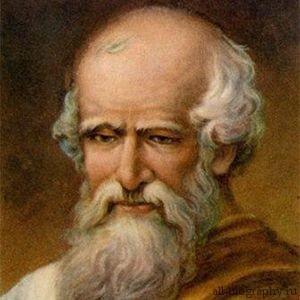 Archimedes (287-212 BC) Nasiraddin Tusi invented his own algorithm resembling modern limit methods according to postulates of Archimedes in order to prove mentioned axioms”. Nasiraddin Tusi described his own method for cubic equations in the book. Kubesov wrote following question: “Were Renaissance mathematicians aware of Nasiraddin’s commentaries about Archimedes’s works or not?” He mentioned that, Nasiraddin’s ideas could be met in most scientists’ works. Those approaches had an important role in invention of new mathematics in XVI-XVII, as its principles were based on notions of application, changing quantities, functional dependence and broad number concept added by N. Tusi including infinitesimal method (infinitely small quantities). It turns out that, Nasiraddin Tusi played a significant role in development of mathematics and geometry and European scientists might use scientific works of the Azerbaijani scientist. There is no doubt that, Nasiraddin Tusi’s works were popular in the middle ages and European scientists used them as a scientific source. So, I want to mention quotations of some scientists, who were popular in Europe for their scientific achievements. Best regards, the member of Azerbaijan Geographic Society,
President grant holder on literature, laureate of the “Golden pen” award,
writer/ investigator Ramiz Daniz 3 В. Ф. Каган. Основание геометрии. М.-Л., 1949. стр. 119
 24820 24820 |
|








 AZ
AZ EN
EN RU
RU


